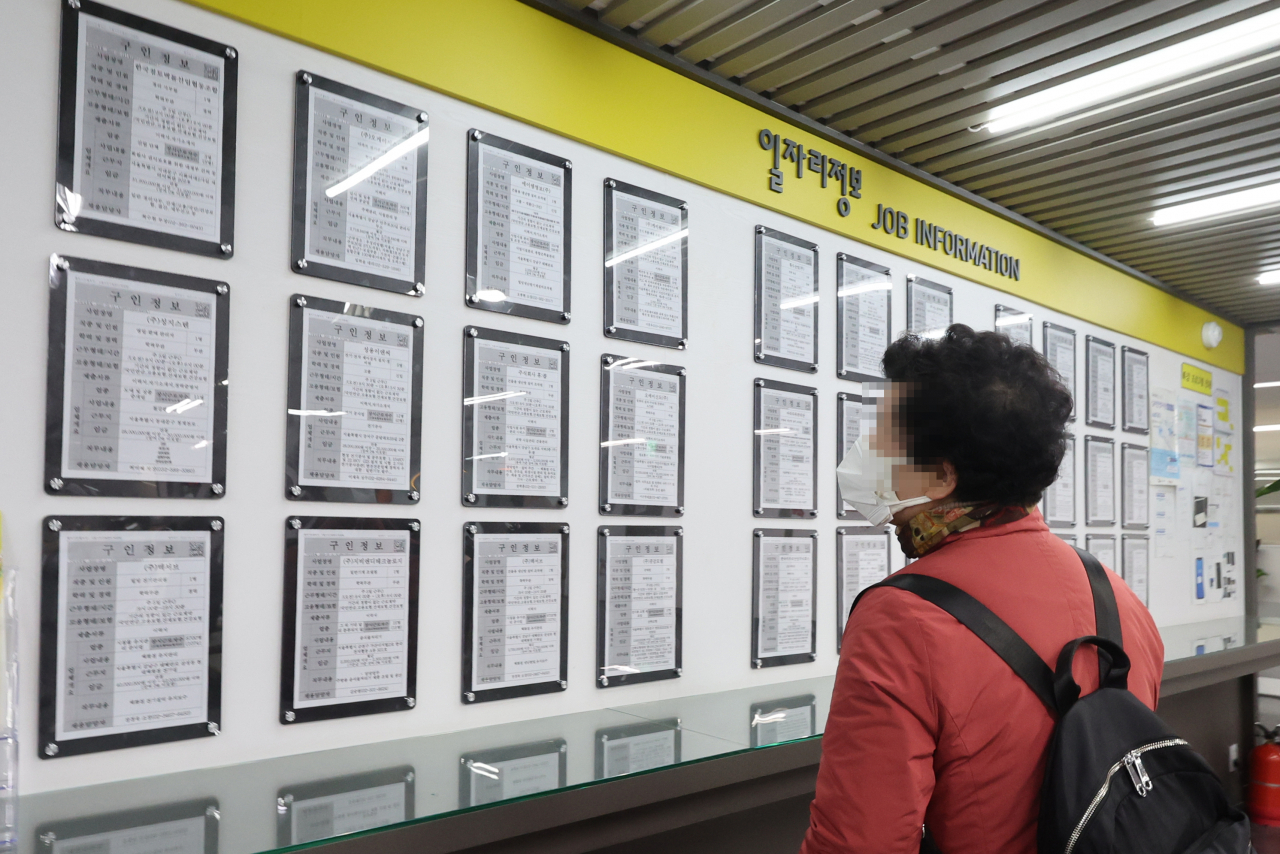 |
A job seeker looks at the job information bulletin board at the Korea Employment Information Service Center in Mapo-gu, Seoul. (Yonhap) |
South Korea's labor market bounced back strongly in March after lackluster growth over the past 10 months as in-person activities have become more widespread.
The total number of employed people came to 28.22 million in March, increasing by 469,000 on-year, according to the data compiled by Statistics Korea on Wednesday.
After reaching a peak in June last year -- seeing an on-year increase of 841,000 employed people, the number had been weakening before rebounding last month.
"Although the economic downturn caused by the decline in exports persisted, the demand for care services and outdoor activities led to an expansion in the number of employed individuals compared to the previous month," a Statistics Korea official said in a statement.
"There is uncertainty in future employment prospects due to various factors causing an economic slowdown, particularly in industries like manufacturing, as well as wholesale and retail, which are heavily influenced by economic factors like exports,” the official added.
The employment rate for those aged 15 and over was 62.2 percent, up 0.8 percentage points from a year ago. This figure is the highest for March since the statistics were first compiled in July 1982.
The number of unemployed people decreased by 34,000 to 840,000, and the unemployment rate dropped 0.1 percentage points to 2.9 percent. This figure is the lowest unemployment rate for March since the revised statistics were first compiled in June 1999.
However, when looking into different age groups, it was evident that the rise in employment was largely led by older adults 60 and above.
The number of employed people aged 60 and over increased by 547,000 on-year in March, while the number of employed people other than those over 60 decreased by 78,000.
According to industry sources, the surge in the number of working older adults is partially due to Korea's baby boomers -- those born between 1955 and 1963 -- entering their 60s.
At the beginning of 2003, the number of individuals in their 60s was around 5 million. In 2013, it increased to 8 million, and this year, it reached over 13 million.
This trend was seen last month when the number of employed individuals aged 60 and over stood at 5.77 million. This was the highest figure for February since the statistics were first compiled in June 1999.
February’s data also showed that the number of employed workers in their 20s and younger, as well as those in their 40s, decreased by 125,000 and 77,000 on-year, respectively.
In March, there was an on-year increase of 50,000 in the number of employed individuals in their 50s and the number of employed people in their 30s also increased by 24,000.
However, there was an on-year drop of 89,000 of employed individuals in their 20s or younger and a decrease of 63,000 among employed individuals in their 40s.
This also led to the number of employed young people -- aged 15 to 29 -- falling for the fifth consecutive month. The employment rate for young people also fell 0.1 percentage point to 46.2 percent.
The number of employed people in their 40s has decreased for the ninth consecutive month as well.
When looking into the data classified by industry, the number of people employed in the manufacturing sector decreased by 49,000, seeing a declining trend for the third consecutive month.
The wholesale and retail sector saw a decrease of 66,000 employed individuals and the construction sector saw a decrease of 20,000 employed individuals.
There was a rise in the number of individuals employed in the health care and welfare sector by 186,000, and the accommodation and restaurant industry also saw an increase of 177,000 employed individuals.







![[Today’s K-pop] Blackpink’s Jennie, Lisa invited to Coachella as solo acts](http://res.heraldm.com/phpwas/restmb_idxmake.php?idx=644&simg=/content/image/2024/11/21/20241121050099_0.jpg)